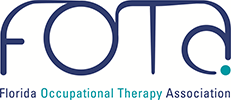
It's Really A Thing
Mirtha M. Whaley, PhD, MPH, OTR/L, SIS Chair, Mental Health
As I was thinking about my contribution to the summer edition of FOCUS, the information that follows came across my radar, and I thought it worthwhile to chat this time about other conditions that affect mental health. This time however, rather than writing about the conditions that we treat, I thought I would address those that affect us in our roles as professional caregivers. So, this is what prompted this piece. The World Health Organization (WHO) refined the definition of burnout in the 10th Revision of the International Classification of Diseases (ICD-10), and included it in the ICD-11 as an “occupational phenomenon” defined as follows (WHO, 2019):
Burnout is a syndrome conceptualized as resulting from chronic workplace stress that has not been successfully managed. It is characterized by three dimensions:
- Feelings of energy depletion or exhaustion
- Increased mental distance from one’s job, or feelings of negativism or cynicism related to one’s job
- Reduced professional efficacy
The genesis of this syndrome is contextual, although certainly there are bound to be person factors associated with individual responses to stress that contribute to burnout. Work-related stress and burnout are consequences of experiences and exposures in the workplace and not in any other personal context, and while burnout is not an illness, it is a risk factor for developing a number of physical conditions and depression (WHO, 2019). Consider also that aside from the effect of burnout on us as individuals, we may be inadvertently placing our clients at risk (Gupta, et al., 2012). Burnout is expensive for employers when it leads to staff turnover because of the cost associated with training new staff, and when it results in medical or Workman’s compensation claims. Recognition of this phenomenon by the WHO indicates this is a world-wide problem with potential for becoming a public health concern. The WHO, in response to this growing phenomenon, is developing evidence-based guidelines for supporting mental wellness in the workplace.
So here is some food for thought, perhaps a way to take a personal inventory to identify your risk factors as well as your current state of mental wellness at your work site. We are attracted to this profession for a variety of reasons, but for many of us it was the human connection and our desire to help people restore, sometimes create, their lives and their stories. Our clients come to us at very difficult times in their lives, with high physical and emotional needs; with their own baggage and reactions to their situations…sometimes fear…sometimes anger; with their own ways of relating and coping; and more often than not, with family caregivers who face similar concerns and present similar challenges (Bruschini, et al., 2016).
We’re constantly thinking in the moment, making clinical decisions, and adjusting the pace with our clients and their caregivers, fully cognizant that our decisions affect people’s lives and the quality of those lives. We are faced with demands for productivity that may be at odds with our professional judgment, perhaps interfere with treatment goals, and even precipitate ethical dilemmas; our professional identities may be challenged when our supervisors’ expectations or the structure of the job preclude us from applying discipline-based theories and frameworks, or when we feel that we cannot engage in occupation-based approaches in our interventions; working hours may extend into our personal or family time so that boundaries between work and our personal lives becomes blurred; we may feel unsupported by our managers and may be subjected to difficult situations with our peers; we may be the targets of microaggressions and even outright bullying in the workplace; the demands of the job may sometimes feel out of sync with our capabilities; recognition for our work may be scarce or lacking; we may lack autonomy and control and feel we are not respected as professionals. Recent graduates, in addition to all that, may be burdened by student loans that might prompt some to accept job offers simply for the salary; contract more than one job to make ends meet; or accept positions with inadequate supervision and limited opportunities for mentoring and support from experienced clinicians. These are not just unfounded perceptions, they are described in the literature on work-related stress and burnout (Reis, 2019; Devery et al., 2018; Scanlan & Still, 2013; Edwards & Dirette, 2010).
Fixing this problem requires a multi-level approach similar to that which we apply to our clinical interventions. Addressing the contexts and tasks of practice will require evidence-based interventions, and change may sometimes be driven by public policy, and always by departmental policies aimed at conditions in the workplace. At the individual level, Gupta et al., (2012) in their study on burnout and coping in occupational therapy, identified a number of strategies used by practitioners to prevent and to recover from burnout. Here’s a brief
summary:
- Set and maintain clear boundaries between work and home
- Negotiate workload and other assignments
- Have supportive networks of family, friends, and colleagues
- Develop and apply time management strategies to improve efficiency and productivity
- Set goals, determine priorities
- Practice self-care through valued physical activity, hobbies, leisure pursuits, and spiritual healing
- Focus on positive aspects of your work, i.e., relationships with clients, clients’ improvement
- Collaborate with the treatment team
- Utilize the required continuing education to strengthen your professional identity.
- Seek mentoring and support from experienced clinicians. That also strengthens your professional identity muscles.
- Be aware of and monitor your response to stress
- Other suggestions for coping that apply to the workplace include using humor; limiting your negative self-talk and adjusting your attitudes and responses; preparing and managing other aspects of your life to prevent or minimize other sources of stress; seeking counseling when appropriate. In the end, there is always the choice of leaving an unhealthy, even toxic workplace.
Additional resources:
Stress at WorkNIH 5 Things You Should Know About Stress
References
Bruschini, M., Carli, A., & Burla, F. (2018). Burnout and work-related stress in Italian rehabilitation professionals: A comparison of physiotherapists, speech therapists, and occupational therapists. Work, 59, 121-129. doi:10.3233/WOR-172657 IOS Press
Devery, H., Scanlan, J., & Ross, J. (2018). Factors associated with professional identity, job satisfaction, and burnout for occupational therapists working in eating disorders: A mixed methods study. Australia Occupational Therapy Journal, 65, 523-532. doi: 10.1111/1440-1630.12503.
Edwards, H., & Dirette, D. (2010). The relationship between professional identity and burnout among occupational therapists. Occupational Therapy in Health Care, 24:2, 119-129. doi: 10.3109/07380570903329610
Gupta, S., Paterson, M., Lysagh, M., vonZweck, C. (2012). Experiences of burnout and coping strategies utilized by
occupational therapists. Canadian Journal of Occupational Therapy, 79, 86-95. doi: 10:2182/cjot.2012.79.2.4
Reis, E. (2019). Beating burnout. PT in Motion, PTinMotionmag.org / February 2019.
Scanlan, J., Meredith, P., & Poulsen, A. (2013). Enhancing retention of occupational therapists working in mental health: Relationships between wellbeing at work and turnover intention. Australian Journal of Occupational Therapy 60, 395-403.
Scanlan, J., & Still, M. (2019). Relationship between burnout, turnover intention, job satisfaction, job demands and job resources for mental health personnel in an Australian mental health service. BMC Health Services Research, 19(1), 1-11.
Seidler, A., Thinschmidt, M., Deckert, S., Then, F., Hegewald, J., Nieuwenhuijsen, K., & Riedel-Heller, S. (2014). Journal of Occupational Medicine and Toxicology 9:10.
doi: http://dx.doi.org.ezproxylocal.library.nova.edu/10.1186/s12913-018-3841-z
World Health Organization. (2019) Burnout an “occupational phenomenon:” International Classification of Diseases. https://www.who.int/mental_health/evidence/burn-out/en/
World Health Organization. (2019). Occupational health: Stress at the Workplace.
https://www.who.int/occupational_health/topics/stressatwp/en/
